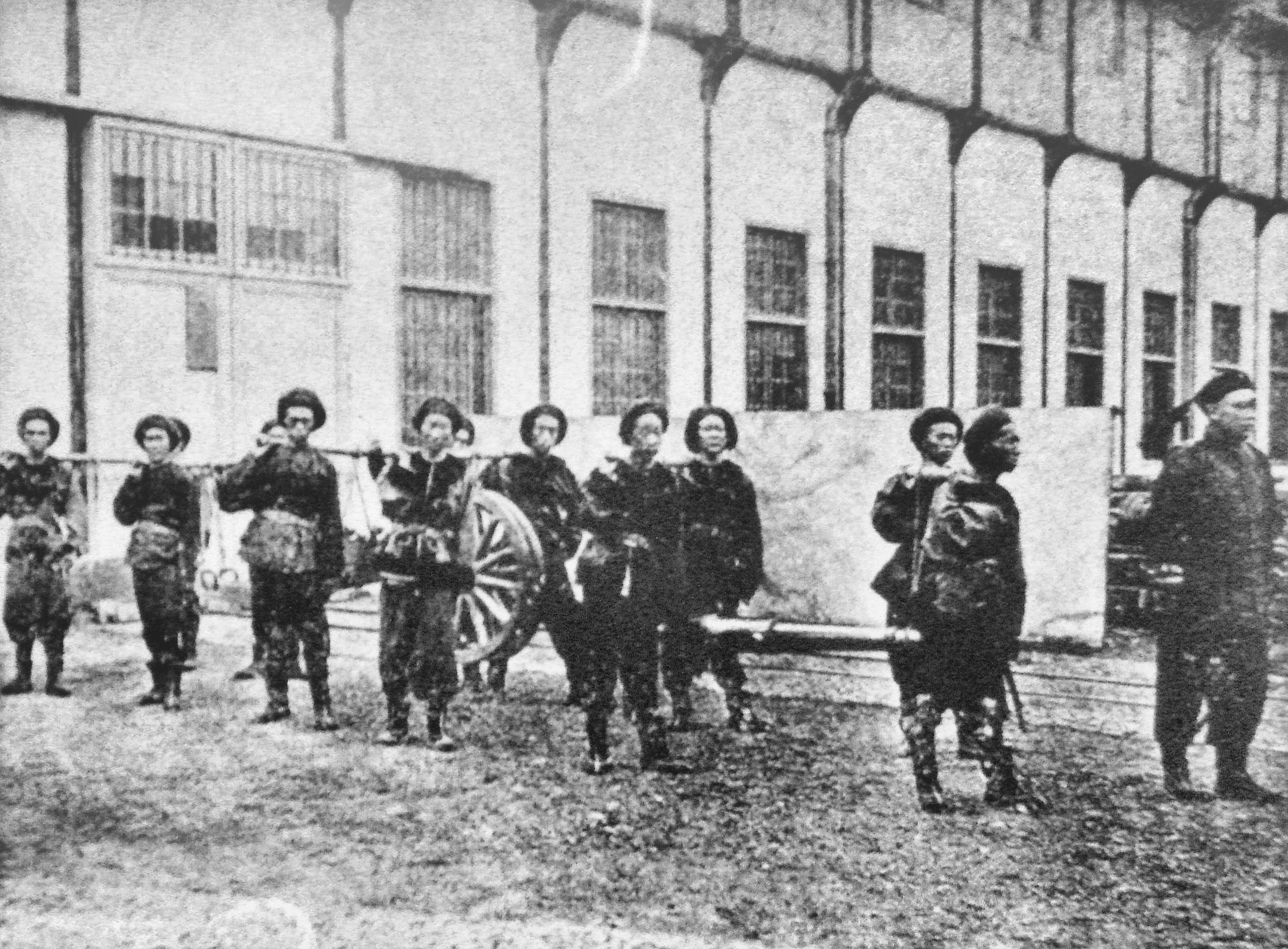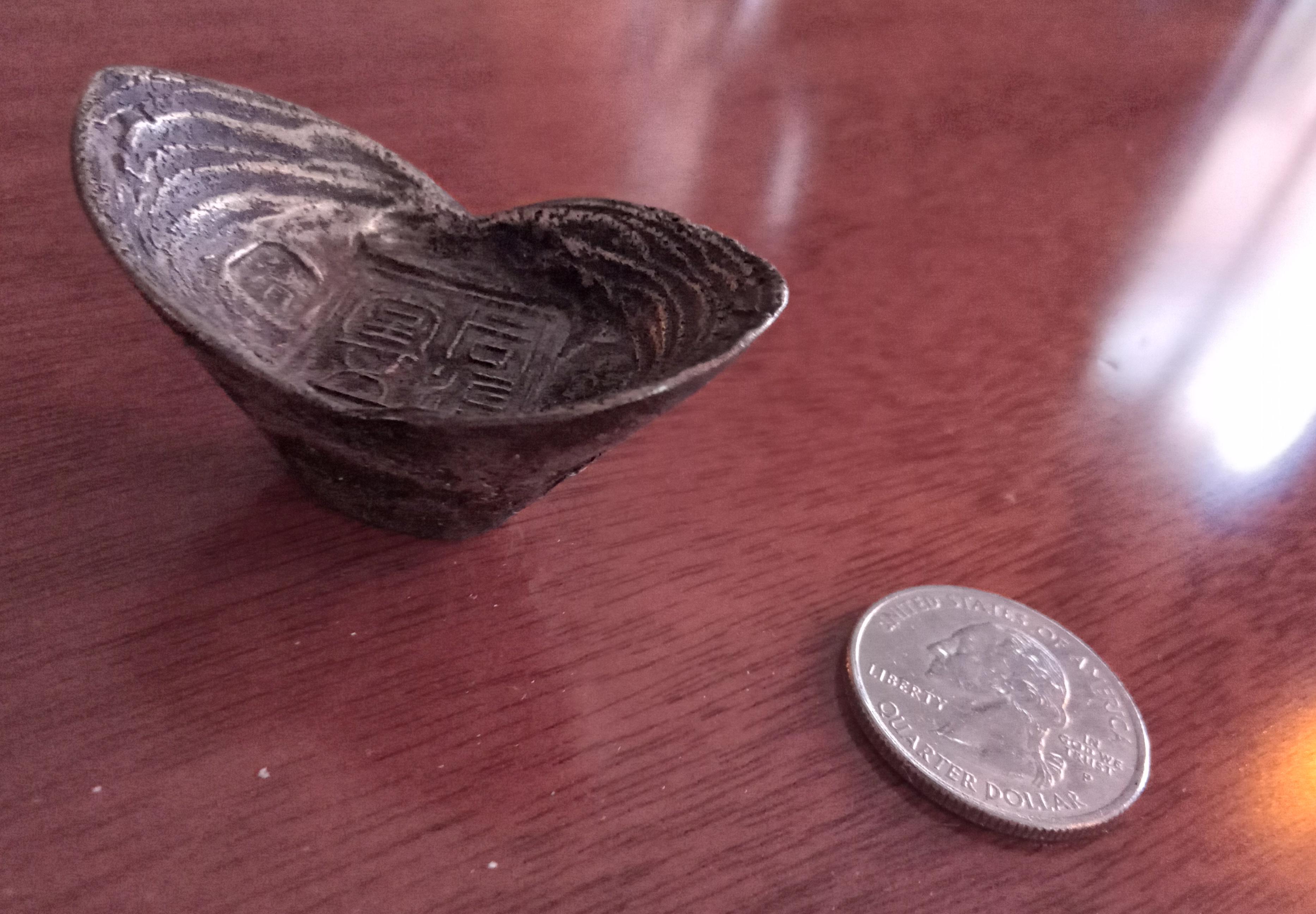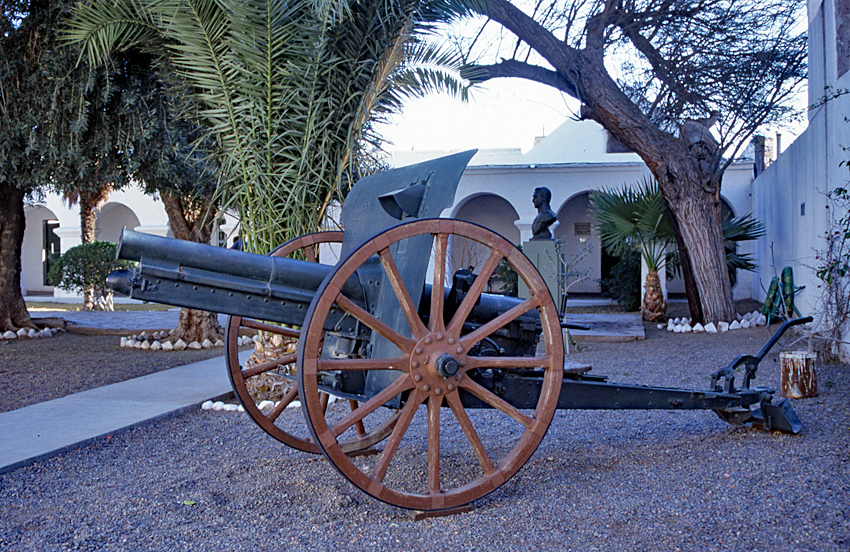|
Chinese Frigate Haian
''Hai'an'' (), originally named ''Zhen'an'' (), was a wooden steam powered frigate built for the Imperial Chinese Navy. She was the lead ship of the , which consisted of her and her sister . They were the largest vessels built in China until the 1930s; they each ran over budget and used sub-standard building materials which limited their use. ''Hai'an'' was initially used as a training ship, and later saw action in the Sino-French War as a potential blockship, being scrapped as a hulk following the war. Design ''Hai'an'' was the lead ship of the of wooden steam powered frigates. She was constructed at the dockyard at the Kiangnan Arsenal for the Imperial Chinese Navy's Nanyang Fleet. ''Hai'an'' and her sister ship were the largest vessels built in China until the cruiser in 1931. ''Hai'an'' was originally named ''Chen-an'', and measured long overall, with a beam of and an average draft of . The propulsion system consisted of a reciprocating engine with a single shaft ... [...More Info...] [...Related Items...] OR: [Wikipedia] [Google] [Baidu] |
Kiangnan Arsenal
Jiangnan Shipyard () is a historic shipyard in Shanghai, China. The shipyard has been state-owned since its founding in 1865 and is now operated as Jiangnan Shipyard (Group) Co. Ltd. Before 2009, the company was south of central Shanghai at 2 Gaoxing Road (). In 2009, the shipyard was moved to Changxing Island, in the mouth of the Yangtze River to the north of urban Shanghai. (). The shipyard builds, repairs and converts both civilian and military ships. Other activities include the manufacture of machinery and electrical equipment, pressure vessels and steel works for various land-based products. Ship building The shipyard main production is: liquefied gas carriers, car carriers, crude oil tankers, Panamax bulk carriers, Handymax bulk carriers, Lake suitable bulk carriers, multi-purpose cargo ships, and fast feeder container ships. The shipyard recently delivered 23,000 TEU LNG-fueled containership the ''CMA CGM Champs Elysées'', but there was a delay of at least 10 m ... [...More Info...] [...Related Items...] OR: [Wikipedia] [Google] [Baidu] |
Sailing Rig
Sailing rigs describe the arrangement of sailing vessels' rig components, including their spars, rigging, and sails. Examples include a schooner rig, cutter rig, junk rig, etc. Rigs may be broadly categorized as fore-and-aft and square-rigged. They may incorporate a mixture of both categories. Within the fore-and-aft category there is a variety of triangular and quadrilateral sail shapes. Spars or battens may be used to help shape a given kind of sail. Each rig may be described with a sail plan—formally, a drawing of a vessel, viewed from the side. Modern examples of single-person sailing craft, such as windsurfers, iceboats, and land-sailing craft, typically have uncomplicated rigs with a single sail on a mast with a boom. Introduction In the English language, ships were usually described, until the end of the eighteenth century, in terms of their type of hull design. Using the type of rig as the main type identifer for a vessel became common only in the nineteenth centur ... [...More Info...] [...Related Items...] OR: [Wikipedia] [Google] [Baidu] |
Bar (river Morphology)
A bar in a river is an elevated region of sediment (such as sand or gravel) that has been deposited by the flow. Types of bars include mid-channel bars (also called braid bars and common in braided rivers), point bars (common in meandering rivers), and mouth bars (common in river deltas). The locations of bars are determined by the geometry of the river and the flow through it. Bars reflect sediment supply conditions, and can show where sediment supply rate is greater than the transport capacity. A mid-channel bar, is also often referred to as a braid bar because they are often found in braided river channels. Braided river channels are broad and shallow and found in areas where sediment is easily eroded like at a glacial outwash, or at a mountain front with high sediment loads. These types of river systems are associated with high slope, sediment supply, stream power, shear stress, and bed load transport rates. Braided rivers have complex and unpredictable channel patt ... [...More Info...] [...Related Items...] OR: [Wikipedia] [Google] [Baidu] |
Shanghai
Shanghai (; , , Standard Mandarin pronunciation: ) is one of the four direct-administered municipalities of the People's Republic of China (PRC). The city is located on the southern estuary of the Yangtze River, with the Huangpu River flowing through it. With a population of 24.89 million as of 2021, Shanghai is the most populous urban area in China with 39,300,000 inhabitants living in the Shanghai metropolitan area, the second most populous city proper in the world (after Chongqing) and the only city in East Asia with a GDP greater than its corresponding capital. Shanghai ranks second among the administrative divisions of Mainland China in human development index (after Beijing). As of 2018, the Greater Shanghai metropolitan area was estimated to produce a gross metropolitan product (nominal) of nearly 9.1 trillion RMB ($1.33 trillion), exceeding that of Mexico with GDP of $1.22 trillion, the 15th largest in the world. Shanghai is one of the world's major centers for ... [...More Info...] [...Related Items...] OR: [Wikipedia] [Google] [Baidu] |
French Navy
The French Navy (french: Marine nationale, lit=National Navy), informally , is the maritime arm of the French Armed Forces and one of the five military service branches of France. It is among the largest and most powerful naval forces in the world, ranking seventh in combined fleet tonnage and fifth in number of naval vessels. The French Navy is one of eight naval forces currently operating fixed-wing aircraft carriers,Along with the U.S., U.K., China, Russia, Italy, India and Spain with its flagship being the only nuclear-powered aircraft carrier outside the United States Navy, and one of two non-American vessels to use catapults to launch aircraft. Founded in the 17th century, the French Navy is one of the oldest navies still in continual service, with precursors dating back to the Middle Ages. It has taken part in key events in French history, including the Napoleonic Wars and both world wars, and played a critical role in establishing and securing the French colonial ... [...More Info...] [...Related Items...] OR: [Wikipedia] [Google] [Baidu] |
Seakeeping
Seakeeping ability or seaworthiness is a measure of how well-suited a watercraft is to conditions when underway. A ship or boat which has good seakeeping ability is said to be very seaworthy and is able to operate effectively even in high sea states. Measure In 1976, St. Denis suggested four principal terms needed to describe a seakeeping performance. These are: *Mission: what the ship is intended to accomplish. The role of the ship while at sea. *Environment: the conditions under which the ship is operating. This can be described as sea state, wind speed, geographic region or some combination thereof. *Ship responses: the response of the ship to the environmental conditions. The responses are a function of the environment and the vessel characteristics. *Seakeeping performance criteria: the established limits for the ship's responses. These are based on the ship motions and the accelerations experienced, and include comfort criteria such as noise, vibration and sea sickness, perfo ... [...More Info...] [...Related Items...] OR: [Wikipedia] [Google] [Baidu] |
Ceremonial Ship Launching
Ceremonial ship launching involves the performance of ceremonies associated with the process of transferring a vessel to the water. It is a nautical tradition in many cultures, dating back thousands of years, to accompany the physical process with ceremonies which have been observed as public celebration and a solemn blessing, usually but not always, in association with the launch itself. Ship launching imposes stresses on the ship not met during normal operation and, in addition to the size and weight of the vessel, represents a considerable engineering challenge as well as a public spectacle. The process also involves many traditions intended to invite good luck, such as christening by breaking a sacrificial bottle of champagne over the bow as the ship is named aloud and launched. Methods There are three principal methods of conveying a new ship from building site to water, only two of which are called "launching". The oldest, most familiar, and most widely used is th ... [...More Info...] [...Related Items...] OR: [Wikipedia] [Google] [Baidu] |
Vancouver
Vancouver ( ) is a major city in western Canada, located in the Lower Mainland region of British Columbia. As the List of cities in British Columbia, most populous city in the province, the 2021 Canadian census recorded 662,248 people in the city, up from 631,486 in 2016. The Greater Vancouver, Greater Vancouver area had a population of 2.6million in 2021, making it the List of census metropolitan areas and agglomerations in Canada#List, third-largest metropolitan area in Canada. Greater Vancouver, along with the Fraser Valley Regional District, Fraser Valley, comprises the Lower Mainland with a regional population of over 3 million. Vancouver has the highest population density in Canada, with over 5,700 people per square kilometre, and fourth highest in North America (after New York City, San Francisco, and Mexico City). Vancouver is one of the most Ethnic origins of people in Canada, ethnically and Languages of Canada, linguistically diverse cities in Canada: 49.3 percent of ... [...More Info...] [...Related Items...] OR: [Wikipedia] [Google] [Baidu] |
Oregon
Oregon () is a U.S. state, state in the Pacific Northwest region of the Western United States. The Columbia River delineates much of Oregon's northern boundary with Washington (state), Washington, while the Snake River delineates much of its eastern boundary with Idaho. The 42nd parallel north, 42° north parallel delineates the southern boundary with California and Nevada. Oregon has been home to many Indigenous peoples of the Americas, indigenous nations for thousands of years. The first European traders, explorers, and settlers began exploring what is now Oregon's Pacific coast in the early-mid 16th century. As early as 1564, the Spanish expeditions to the Pacific Northwest, Spanish began sending vessels northeast from the Philippines, riding the Kuroshio Current in a sweeping circular route across the northern part of the Pacific. In 1592, Juan de Fuca undertook detailed mapping and studies of ocean currents in the Pacific Northwest, including the Oregon coast as well as ... [...More Info...] [...Related Items...] OR: [Wikipedia] [Google] [Baidu] |
Taels
Tael (),"Tael" entry at the . also known as the tahil and by , can refer to any one of several used in and |
Krupp Gun
The Krupp gun is a family of artillery pieces that was used by several world armies from the nineteenth century onwards. History In 1811, Friedrich Krupp founded his cast-steel factory ''Gusstahlfabrik'', but it was his son, Alfred Krupp, who attained notable success. The principal characteristic of Krupp guns was that they were made of steel at the time when everyone else still used bronze, cast iron and sometimes wrought iron. Alfred Krupp was introduced to the Bessemer process to mass-produce steel by his London agent and friend, Alfred Longsdon, in 1859-60. After a lengthy period of trial and error, this steel was developed to such quality that the royal factory of Woolwich in England acquired steel from Krupp to manufacture guns that conformed to British naval standards. Also, Krupp was one of the first manufacturers to design practical breechloading guns for army use. In 1856, Fried. Krupp A.G., produced a 9 cm ( 6-Pfünder-Feldkanone C/61) rifled breechloader of cast steel ... [...More Info...] [...Related Items...] OR: [Wikipedia] [Google] [Baidu] |
Broadside (naval)
A broadside is the side of a ship, or more specifically the battery of cannon on one side of a warship or their coordinated fire in naval warfare, or a measurement of a warship's maximum simultaneous firepower which can be delivered upon a single target (because this concentration is usually obtained by firing a broadside). From the 16th century until the early decades of the steamship, vessels had rows of guns set in each side of the hull. Firing all guns on one side of the ship became known as a "broadside". The cannon of 18th-century men of war were accurate only at short range, and their penetrating power mediocre, which meant that the thick hulls of wooden ships could only be pierced at short ranges. These wooden ships sailed closer and closer towards each other until cannon fire would be effective. Each tried to be the first to fire a broadside, often giving one party a decisive headstart in the battle when it crippled the other ship.Platt (1993) p. 18 History Since anci ... [...More Info...] [...Related Items...] OR: [Wikipedia] [Google] [Baidu] |


_during_Typhoon_Cobra%2C_December_1944.jpg)


.jpg)


